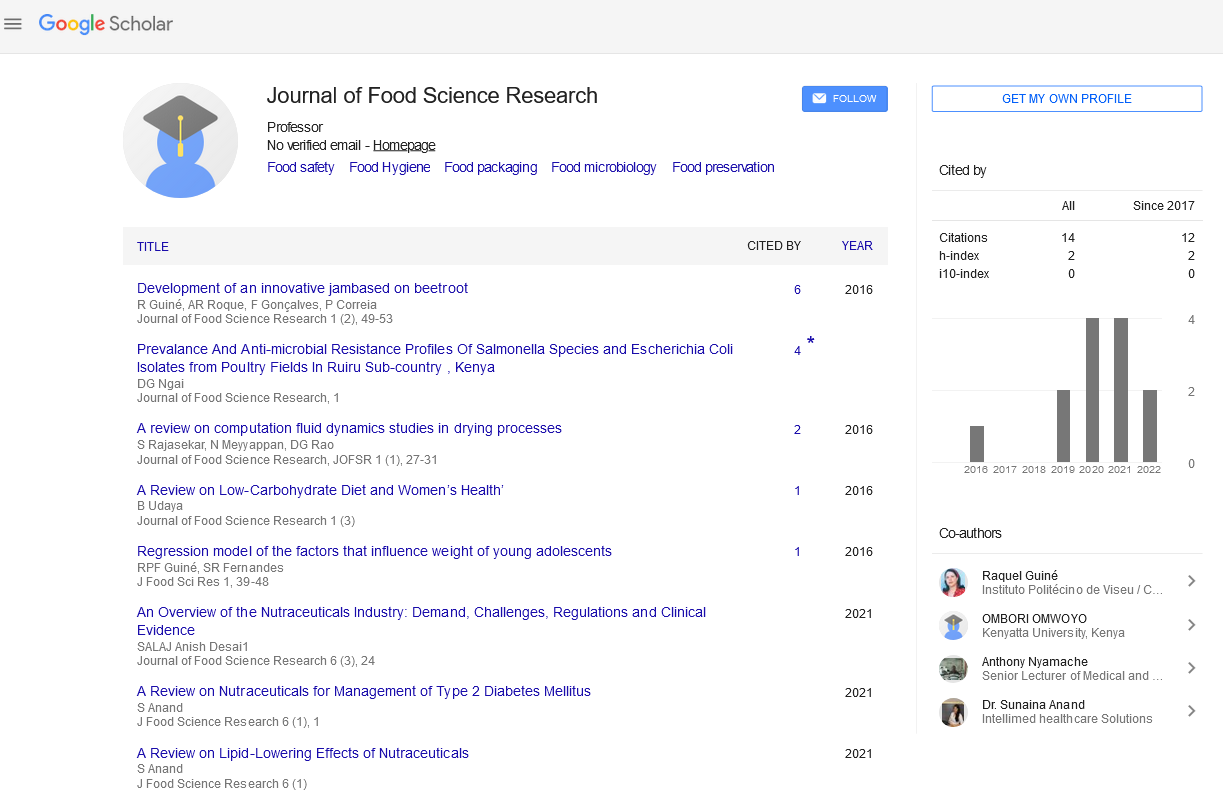Abstract
Food Technology 2019: Nutritional profile of some selected pulses of sindh Pakistan
Author(s): Aijaz Hussain SoomroThe results of proximate analysis showed that these pulses contains high protein content ranged from 18.11% to 23.79%, ash content ranged from 2.33% to 3.90%, pulses has very low lipid content ranged from 0.74% to 4.84%, but pulses are high in carbohydrate ranged from 59.75% to 65.75%. Due to low fat content, fat soluble vitamins also lack in pulses, vitamin A was not found in all the samples, vitamin E was present in chickpea white, chickpea brown and split chickpea in a very minute quantity of 1.86, 1.56 and 0.65 mg/100g, respectively, β-carotene precursor of vitamin A was found in all samples ranged from 0.083 to 0.545 mg/100g. The amino acids include essential amino acids leucine found in chickpea white 3.40g/100g and lysine 4.29g/100g in kidney bean. Non-essential amino acids aspartic and glutamic acid was higher in black eyed bean 2.667 and 5.168 g/100g, respectively, while the arginine was found 4.330 g/100g in white lentil. Sulphur containing amino acid cysteine found in excellent quantity in yellow lentil 8.427 g/100 and in black eyed bean 4.543 g/100g. Conclusion & Significance: It is concluded that, pulses are excellent protein sources and could be used to decrease the protein deficiency prevailing in the country. Pakistani wheat varieties are grown over a wide agro-climatic range and as such are anticipated to exhibit yield and quality differences. It is therefore necessary to investigate the nutritional status of wheat varieties in terms of biochemical and physiochemical characteristics available for food and nutritional purposes in Pakistan. The result shows that wheat grains of different varieties contain a net protein level of 9.15%-10.27%, 2.15%-2.55% total fats, 1.72%-1.85% dietary fibres, 77.65x10(-6)-84.25x10(-6) of potassium and 7.70x10(-6)-35.90x10(-6) of sodium ions concentration, 0.24x10(-6)-0.84x10(-6) of phosphorus, 1.44%-2.10% ash, 31.108-43.602 g of thousand grain mass (TGM) and 8.38%-9.67% moisture contents. This study is significant in providing an opportunity to explore the available wheat varieties and to further improve their nutritional excellence and also essential for setting nutritional regulations for domestic and export purposes

